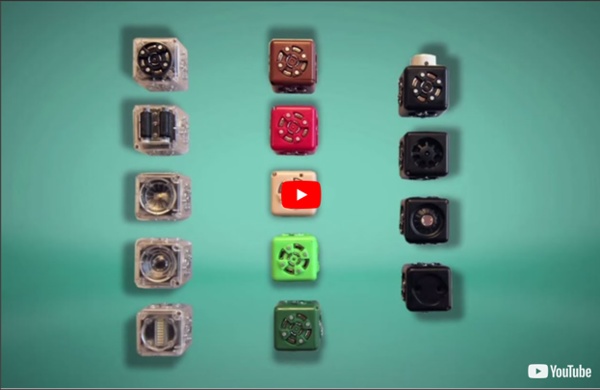



27 Makerspace Materials & Supplies Free Supply List (PDF) – 100+ Makerspace Materials and Supplies What makerspace materials and supplies should you buy or stock for your hands-on learning lab? There are a lot of options out there to choose from and it can be confusing when you’re first starting out as a maker educator. Instead of just spending money randomly on items you think you will need, it’s always a great idea to work backwards first. Here are some of the top makerspace materials and supplies a classroom or library should consider adding to their space. UPDATE – Check out our latest post that highlights over 100+ Makerspace Materials and Products (FREE Supply List) Legos: Lego education has curriculum ranging from preschool to high school. Cubelets: These are modular robotic blocks that are connected with magnets. Playdoh: This makerspace material is primarily used for squishy circuits. LEDs: Light Emitting Diodes are a staple in most makerspaces. Makeblock: Open-source Arduino robot building platform.
It's All About Those Straws! - Teachers Are Terrific! A STEM Blog A few days ago I was putting together some containers of STEM materials for a class challenge and heard a student say this: "I see straws in those bins. We use a lot of straws!" Yes, we do! In fact, we use so many straws for challenges that I asked for straws to be added to our school supply list this year! Well, I asked for them! Let me show a little we have done with straws! This is going to be a quick look at some of our challenges. Amazing Mazes! Above is a Quick Challenge called Straw Mazes. Yes, tennis ball towers! Above is another Challenge called Tennis Ball Towers. Bridges and Boats Above is a bridge challenge. Bubbles and Bubble Wands Above is Making Bubbles! Platforms and Parachutes Above is a Straw Platform! Above kids are making a container to hold an egg. Towers, Rescue Devices, Hoop Flyers, and Geodesic Domes Above is a Straw Tower! Above is one of my all-time favorites! Above is one of our most recent challenges! Above is another recent challenge building Bucket Towers!
Makerspace Starter Kit The hot new Makerspace Movement is NOT new to Murray Hill Middle School. Eighteen years ago we designed and opened the school with the idea that we would have creation labs in the Media Center, GT room, and the TV studio. We started with video production, iMovie, Specular LogoMotion, Hyperstudio, and animation with Hollyood High kids. Here's an example of an EARLY (2003) video production called Bookfellas, featuring some Guy Ritchie-esque film direction techniques. These kids are now all grown up and we've kept evolving, too! It's OK to Start Small! I re-purposed some of my empty study carrels for this Makerspace center at the top corner of our library. As I asserted in a recent blog post about new Ed Tech trends, fads, & tech -you can start small and You Don't Have to Marry It! For the Duct Tape Craft Cubby, I used a spring loaded curtain rod to hold the duct tape rolls, bought a bright blue colored shower caddy for the scissors and other tools. Amazon Delivers! FUND Me!